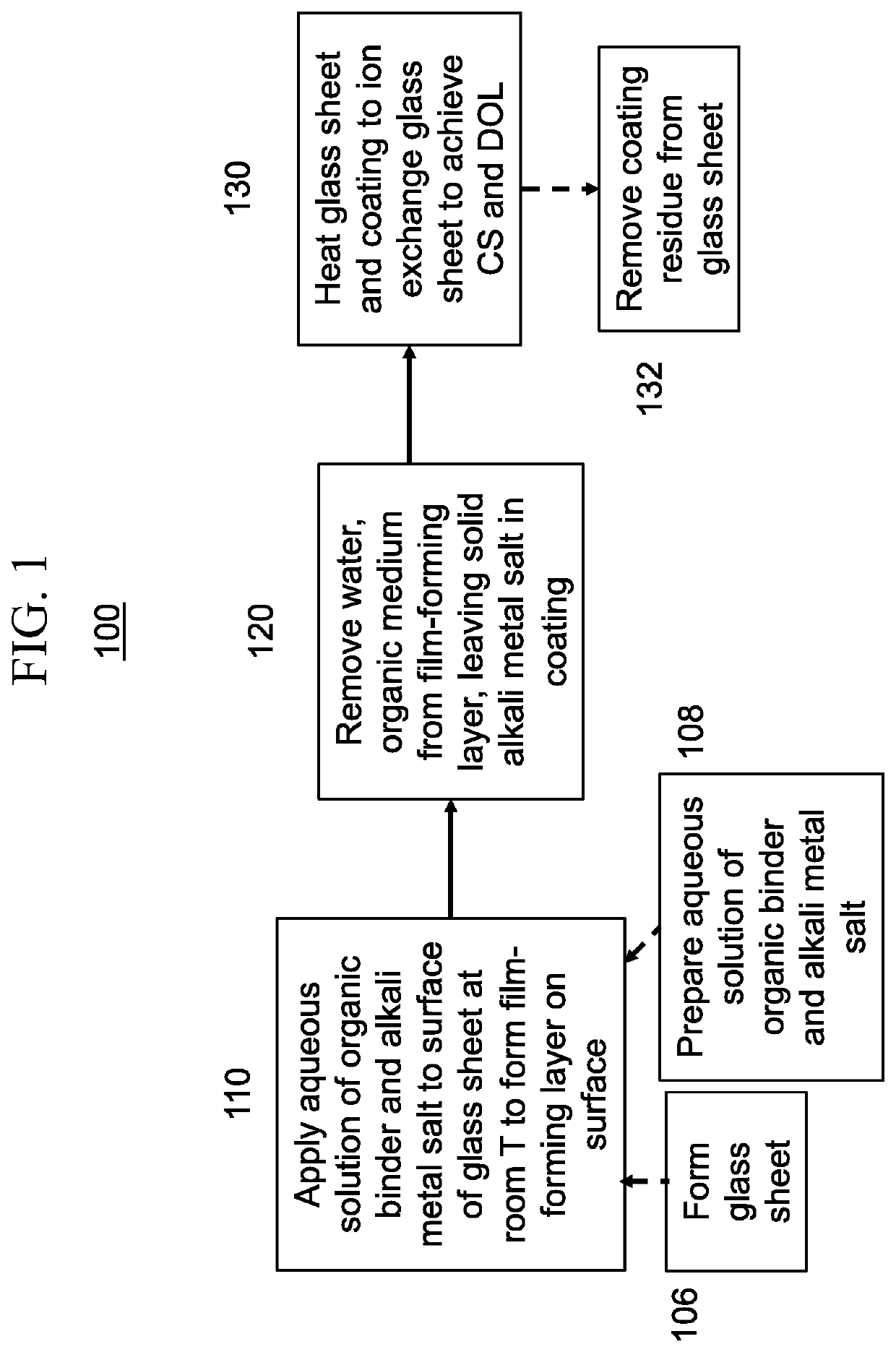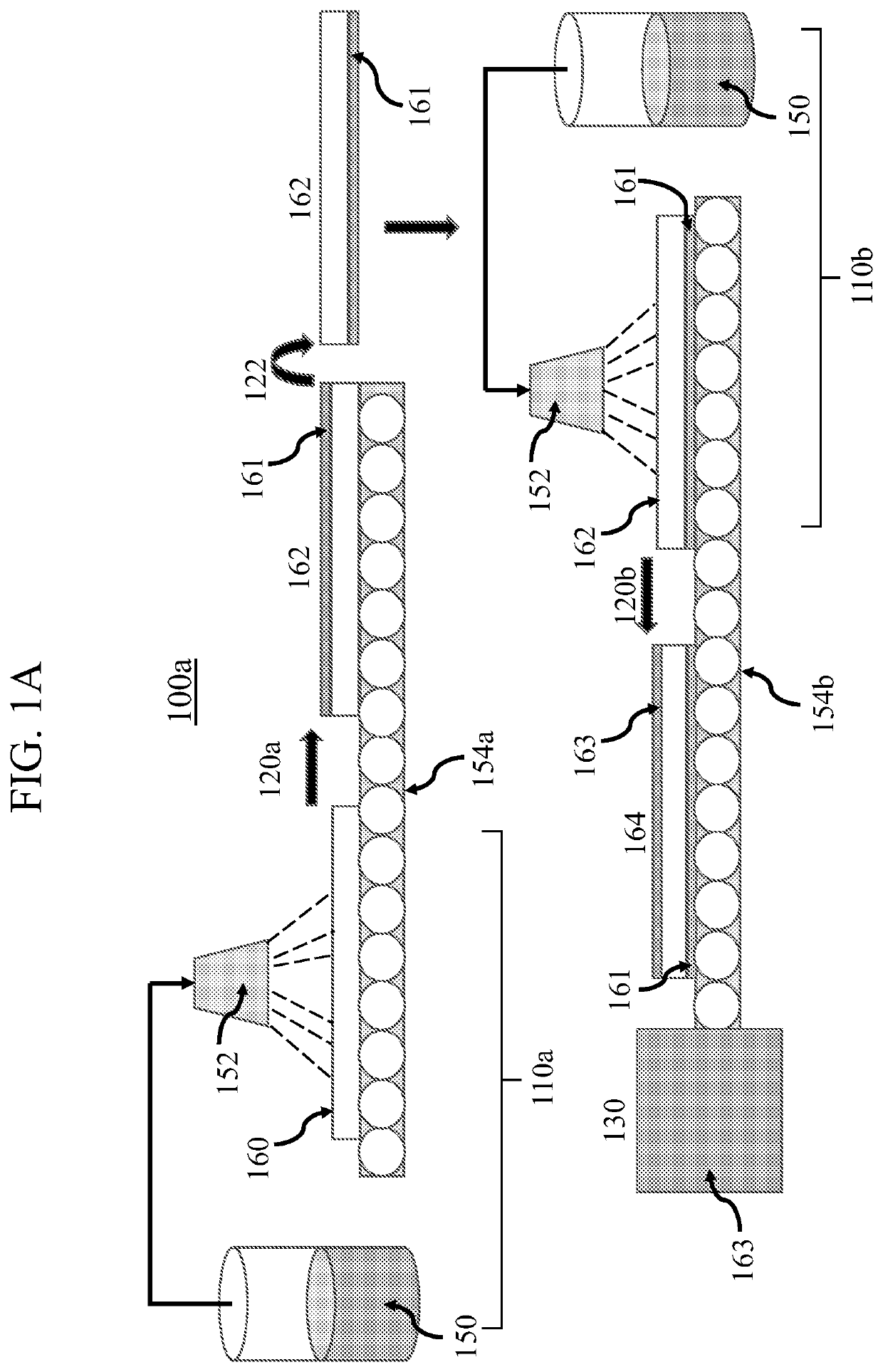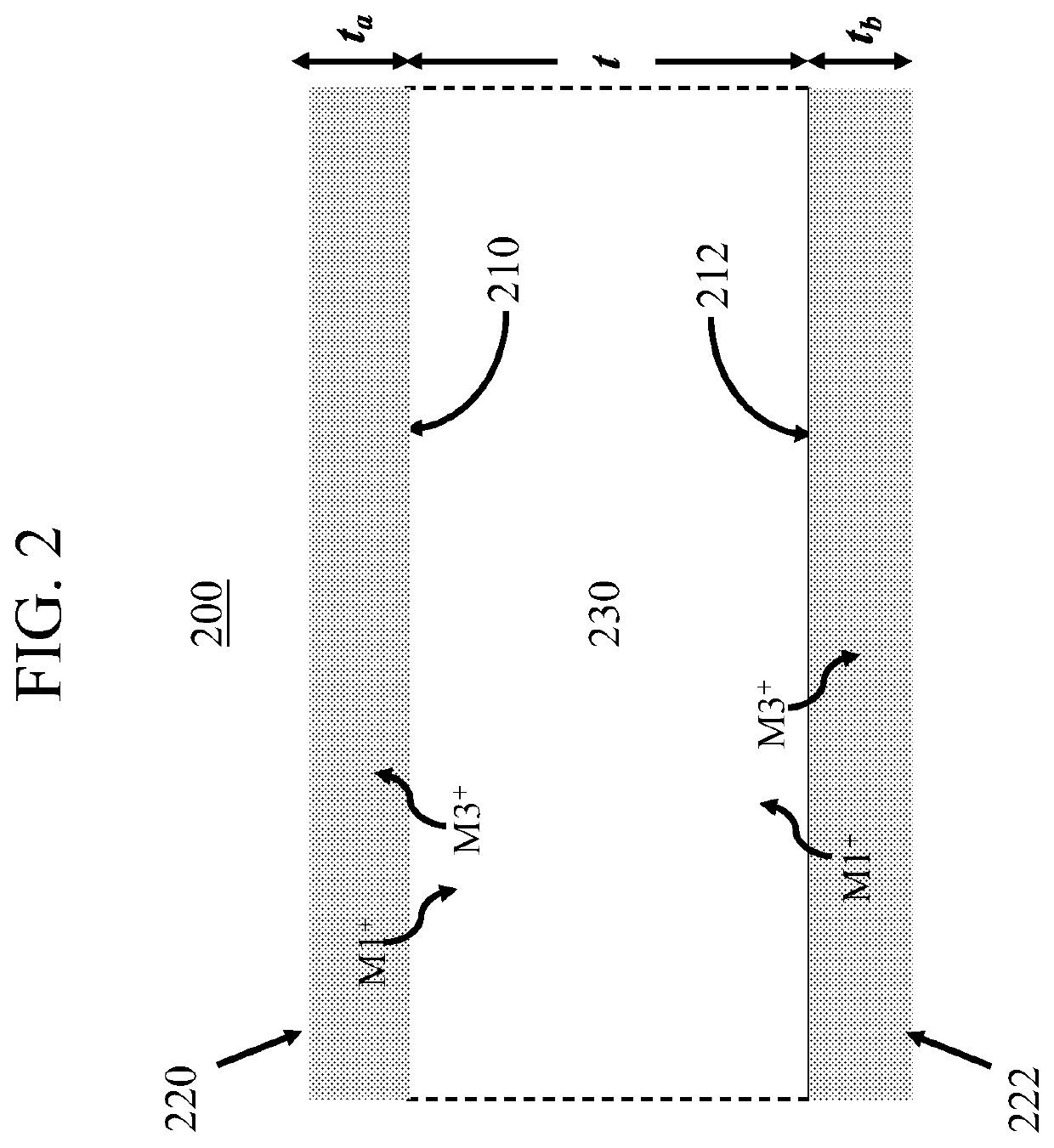Ion exchange process for ultra-thin glass
a technology of ultra-thin glass and ion exchange, which is applied in the field of ion exchange process for ultra-thin glass, can solve the problems of increasing costs, requiring special handling, and expensive high temperature processing
- Summary
- Abstract
- Description
- Claims
- Application Information
AI Technical Summary
Benefits of technology
Problems solved by technology
Method used
Image
Examples
example 1
[0096]A potassium source for chemical strengthening is first prepared. In one embodiment, the potassium source an aqueous precursor solution containing K3PO4 and KNO3 in a molar ratio of 9:1. The aqueous precursor solution comprises 25% of these two alkali metal salts by weight. The aqueous precursor solution also contains from about 1.2% to about 1.4% by weight of an organic binder—in this case ethylene acrylic acid (EAA). The aqueous precursor solution is applied to a first surface of the ultra-thin glass-based article using an air actuated spray valve. The coating applied to the first surface is allowed to dry, in some embodiments, for about 30 minutes at about 100° C. to remove water, in some embodiments, thereby removing the aqueous solvent, leaving a coating comprising the organic binder, solid K3PO4, and solid KNO3 on the first surface. In some embodiments, the coated surface is dried under ambient conditions such as, for example, at about 20-30° C. for 8 hours or more in air...
PUM
| Property | Measurement | Unit |
|---|---|---|
| Temperature | aaaaa | aaaaa |
| Temperature | aaaaa | aaaaa |
| Length | aaaaa | aaaaa |
Abstract
Description
Claims
Application Information
 Login to View More
Login to View More - R&D
- Intellectual Property
- Life Sciences
- Materials
- Tech Scout
- Unparalleled Data Quality
- Higher Quality Content
- 60% Fewer Hallucinations
Browse by: Latest US Patents, China's latest patents, Technical Efficacy Thesaurus, Application Domain, Technology Topic, Popular Technical Reports.
© 2025 PatSnap. All rights reserved.Legal|Privacy policy|Modern Slavery Act Transparency Statement|Sitemap|About US| Contact US: help@patsnap.com



